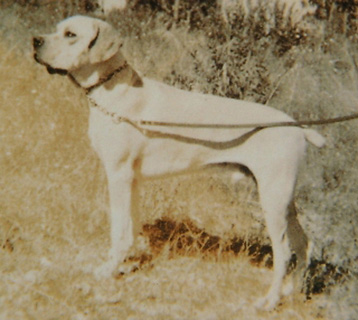THE HISTORY OF PERDIGUEIRO
A dog which is a very important jewel of the historical, social, cultural and genetic portuguese heritage...
The Portuguese Pointer (Perdigueiro), issued from the ancient Iberian hunting dogs, definitely appears in Portugal with same morphology and similar function since the Xth century. Initially the dog was bred in the royal kennels or those of the gentry and used to look and point for wounded game, for falconry and for fowling-net. Since at least the XIIth until the XVIIIth century, the Perdigueiro was a very popular hunting dog and the lower classes of society used it widely to point and retrieve game.
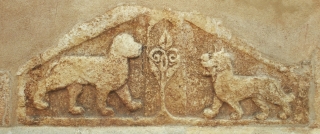
![]()
Tomar Church (X Cent.) - The commonest portuguese hunting dogs - Perdigueiro and podengo (with a rabbit)

![]()
Coimbra (XII Cent) - A Perdigueiro and a hare
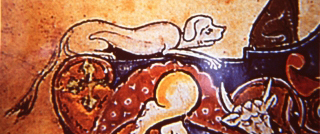
![]()
Genesis, XIII Cent. - National Lisbon Library. Capitular and detail - the eared tail as de Espinar wrote - a perdigueiro points a hare
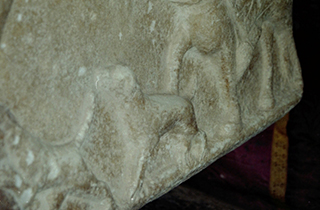
![]()
![]()
![]()
XIVCent - Monsaraz, a stone sepulcher - the horse, the falcon and a similar dog with present perdigueiro

![]()
![]()
![]()
Hunting Book from Gaston Phoebus (XIV Cent).

![]()
Perdigueiros, painting, Castelo de la Manta, Sabóia, Piemonte, Italy, 1420

![]()
Isabel from Portugal, Queen of Spain, with a perdigueiro pointing. Note the long rope usual in those pointing dogs (Madrid, Prado Museum, XVI Cent.)

![]()
![]()
Falconry, David Vinckboons, (1578-1629)

![]()
Namban Japan Portuguese Art- XVI Cent, National Art Museum, Lisbon - the perdigueiro, the rope and the falcon arriving to Japan in Portuguese boats.
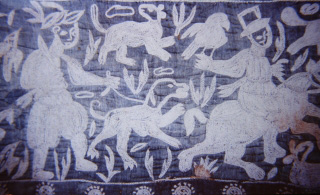
From India (National Art Museum in Lisbon -XVII Cent. The horse, the falcon, the dog and the rope in a embroidered cotton.

![]()
![]()
XVIII Century - Expedition of Colonel Sampaio e Sousa in Brazil
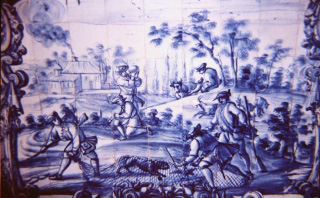
![]()
![]()
Estremoz, XVII Cent - Hunting with net and perdigueiro (docked tail).
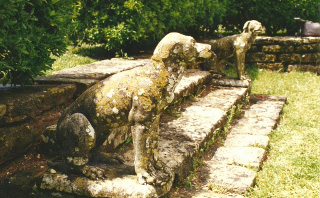
![]()
![]()
XVII Century - The stone perdigueiros of Torres Vedras

![]()
![]()
A Portuguese Book (The Perfect Riffle- Lisbon, 1718)
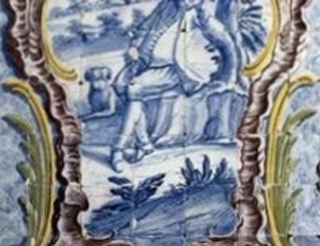
Tile in National Tile Museum , Lisbon, 1750-80
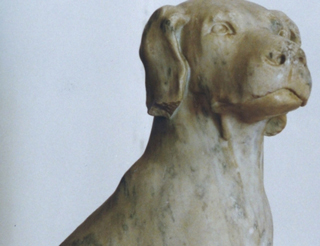
![]()
![]()
XVIII Cent - Alorna's farm
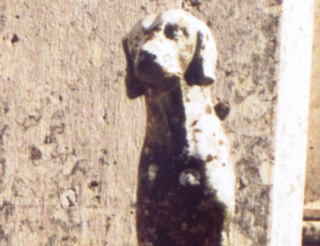
National Palace and Gardens of Queluz, 1760
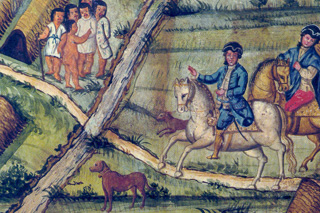
![]()
![]()
![]()
Col. Camargo, São Paulo, Brazil
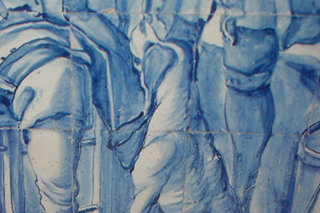
Mello Palace, Lisbon (XVIII Cent)
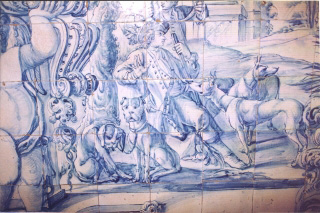
S. José Hospital, Lisbon - The Perdigueiro among other hunting dogs on left (XVIII Cent)
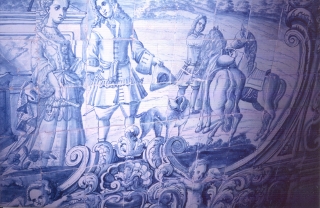
Oporto Cathedral, XVIII Century
As from the XVIIIth century, the British colony in Oporto (generous wine) took many of these excellent old portuguese pointers to England where they took a place in the origin of the english pointer. As from the final XIXth century, a period of considerable hardships for our social life, when a triumphant liberalism introduced new fashions and ways imported from abroad, the breed goes into a progressive decline. Starting the XXth century did some breeders made an effort of recuperation of the ancient portuguese breed with pure dogs located in the inaccessible north of Portugal. The pedigree book was set in 1932 and the Standard in 1938.
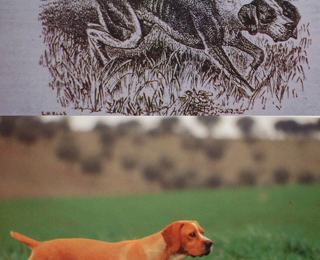
The old "spanish" or iberian pointer in a english book and a present perdigueiro
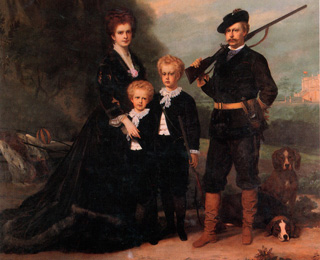
Portuguese King Luis and family with their perdigueiros - Ajuda Palace, XIX Century
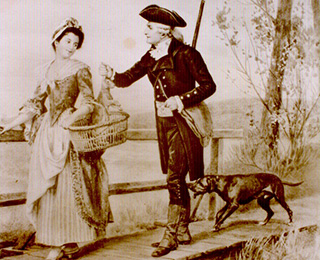
Gatão Farm, Douro, Oporto XIX Century - The hunter and the perdigueiro coming home. Just like a present portuguese pointer.
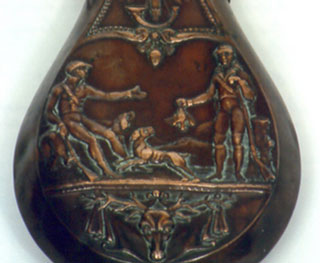
![]()
Powderhorn 1810, the actual Iberian perdigueiro , Col. A. J. Amaral, S. Miguel - Azores
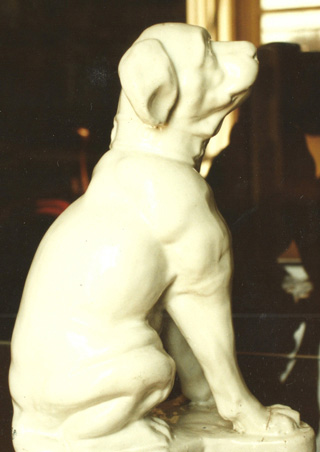
![]()
Royal Fabric do Rato - Tomas Bruneto - Lisbon City Museum, XVIII Cent.

![]()
A King Fernando II painting and detail. A great hunter this king. XIX Cent.
During at least a thousand of years, this dog as always the same square head, a marked stop, triangular ears, the same compact look and since XVIIth century, the same docked tail, and among pointing dogs all over the world just the perdigueiro and his "son" the english pointer have this kind of skull-facial convergence so typical...
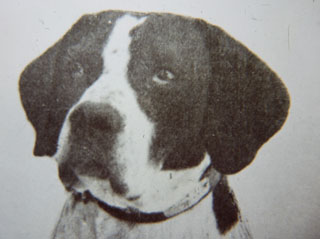
Oakland - Ponte de Lima, 1932

Ch Port Apolo de Paiva, 1950
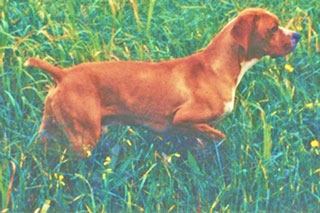
Ch Int, Ch Port, Ch ESP, Ch CS Pele, 1985
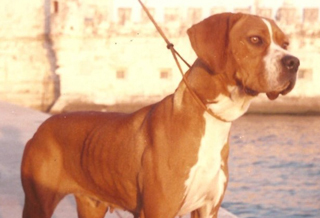
Ch Port, Ch Int. Tr. Nisa, 1990
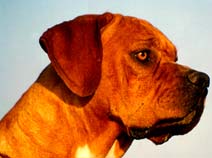
Ch Int. Ch Port., Ch Bélg. Ch Eur 94, Ch Mundo WW95 Estoril de Torres, 1995

Ch Port, Ch Mundo WW2000 TAN Jói de Torres, 2000






























